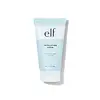What's inside
What's inside
 Key Ingredients
Key Ingredients

 Benefits
Benefits

 Concerns
Concerns

 Ingredients Side-by-side
Ingredients Side-by-side

Water
Skin ConditioningEthylhexyl Palmitate
EmollientGlycerin
HumectantAluminum Starch Octenylsuccinate
AbsorbentMagnesium Aluminometasilicate
AbsorbentButylene Glycol
HumectantGlyceryl Stearate
EmollientPEG-100 Stearate
Polysorbate 60
EmulsifyingCetearyl Alcohol
EmollientStearic Acid
CleansingJuglans Regia Shell Powder
AbrasiveSorbitan Stearate
EmulsifyingCocamidopropyl Betaine
CleansingTocopheryl Acetate
AntioxidantXanthan Gum
EmulsifyingDisodium EDTA
Sodium Chloride
MaskingTriethanolamine
BufferingPrunus Armeniaca Fruit Extract
Skin ConditioningPhenoxyethanol
PreservativeCaprylyl Glycol
EmollientParfum
MaskingWater, Ethylhexyl Palmitate, Glycerin, Aluminum Starch Octenylsuccinate, Magnesium Aluminometasilicate, Butylene Glycol, Glyceryl Stearate, PEG-100 Stearate, Polysorbate 60, Cetearyl Alcohol, Stearic Acid, Juglans Regia Shell Powder, Sorbitan Stearate, Cocamidopropyl Betaine, Tocopheryl Acetate, Xanthan Gum, Disodium EDTA, Sodium Chloride, Triethanolamine, Prunus Armeniaca Fruit Extract, Phenoxyethanol, Caprylyl Glycol, Parfum
Water
Skin ConditioningAlumina
AbrasiveParaffinum Liquidum
EmollientGlycerin
HumectantDimethicone
EmollientButyrospermum Parkii Butter
Skin ConditioningPEG-100 Stearate
Stearyl Alcohol
EmollientGlyceryl Stearate
EmollientSolum Diatomeae
AbrasiveAmmonium Polyacryloyldimethyl Taurate
Emulsion StabilisingPhenoxyethanol
PreservativeMethylparaben
PreservativeButylparaben
MaskingEpilobium Angustifolium Extract
Skin ConditioningDisodium EDTA
Hydrolyzed Algin
Water, Alumina, Paraffinum Liquidum, Glycerin, Dimethicone, Butyrospermum Parkii Butter, PEG-100 Stearate, Stearyl Alcohol, Glyceryl Stearate, Solum Diatomeae, Ammonium Polyacryloyldimethyl Taurate, Phenoxyethanol, Methylparaben, Butylparaben, Epilobium Angustifolium Extract, Disodium EDTA, Hydrolyzed Algin
Ingredients Explained
These ingredients are found in both products.
Ingredients higher up in an ingredient list are typically present in a larger amount.
Disodium EDTA plays a role in making products more stable by aiding other preservatives.
It is a chelating agent, meaning it neutralizes metal ions that may be found in a product.
Disodium EDTA is a salt of edetic acid and is found to be safe in cosmetic ingredients.
Learn more about Disodium EDTAGlycerin is already naturally found in your skin. It helps moisturize and protect your skin.
A study from 2016 found glycerin to be more effective as a humectant than AHAs and hyaluronic acid.
As a humectant, it helps the skin stay hydrated by pulling moisture to your skin. The low molecular weight of glycerin allows it to pull moisture into the deeper layers of your skin.
Hydrated skin improves your skin barrier; Your skin barrier helps protect against irritants and bacteria.
Glycerin has also been found to have antimicrobial and antiviral properties. Due to these properties, glycerin is often used in wound and burn treatments.
In cosmetics, glycerin is usually derived from plants such as soybean or palm. However, it can also be sourced from animals, such as tallow or animal fat.
This ingredient is organic, colorless, odorless, and non-toxic.
Glycerin is the name for this ingredient in American English. British English uses Glycerol/Glycerine.
Learn more about GlycerinGlyceryl Stearate is a mix of glycerin and stearic acid.
It is used to stabilize the mixing of water and oil ingredients. By preventing these ingredients from separating, it can help elongate shelf life. It can also help thicken the product's texture.
As an emollient, it helps soften skin and supports barrier-replenishing ingredients.
In cosmetics, Glyceryl Stearate is often made from vegetable oils or synthetically produced.
This ingredient may not be fungal-acne safe
Fun fact: The human body also creates Glyceryl Stearate naturally.
Learn more about Glyceryl StearatePeg-100 Stearate is an emollient and emulsifier. As an emollient, it helps keep skin soft by trapping moisture in. On the other hand, emulsifiers help prevent oil and water from separating in a product.
PEGS are a hydrophilic polyether compound . There are 100 ethylene oxide monomers in Peg-100 Stearate. Peg-100 Stearate is polyethylene glycol ester of stearic acid.
Phenoxyethanol is a preservative that has germicide, antimicrobial, and aromatic properties. Studies show that phenoxyethanol can prevent microbial growth. By itself, it has a scent that is similar to that of a rose.
It's often used in formulations along with Caprylyl Glycol to preserve the shelf life of products.
Water. It's the most common cosmetic ingredient of all. You'll usually see it at the top of ingredient lists, meaning that it makes up the largest part of the product.
So why is it so popular? Water most often acts as a solvent - this means that it helps dissolve other ingredients into the formulation.
You'll also recognize water as that liquid we all need to stay alive. If you see this, drink a glass of water. Stay hydrated!
Learn more about Water